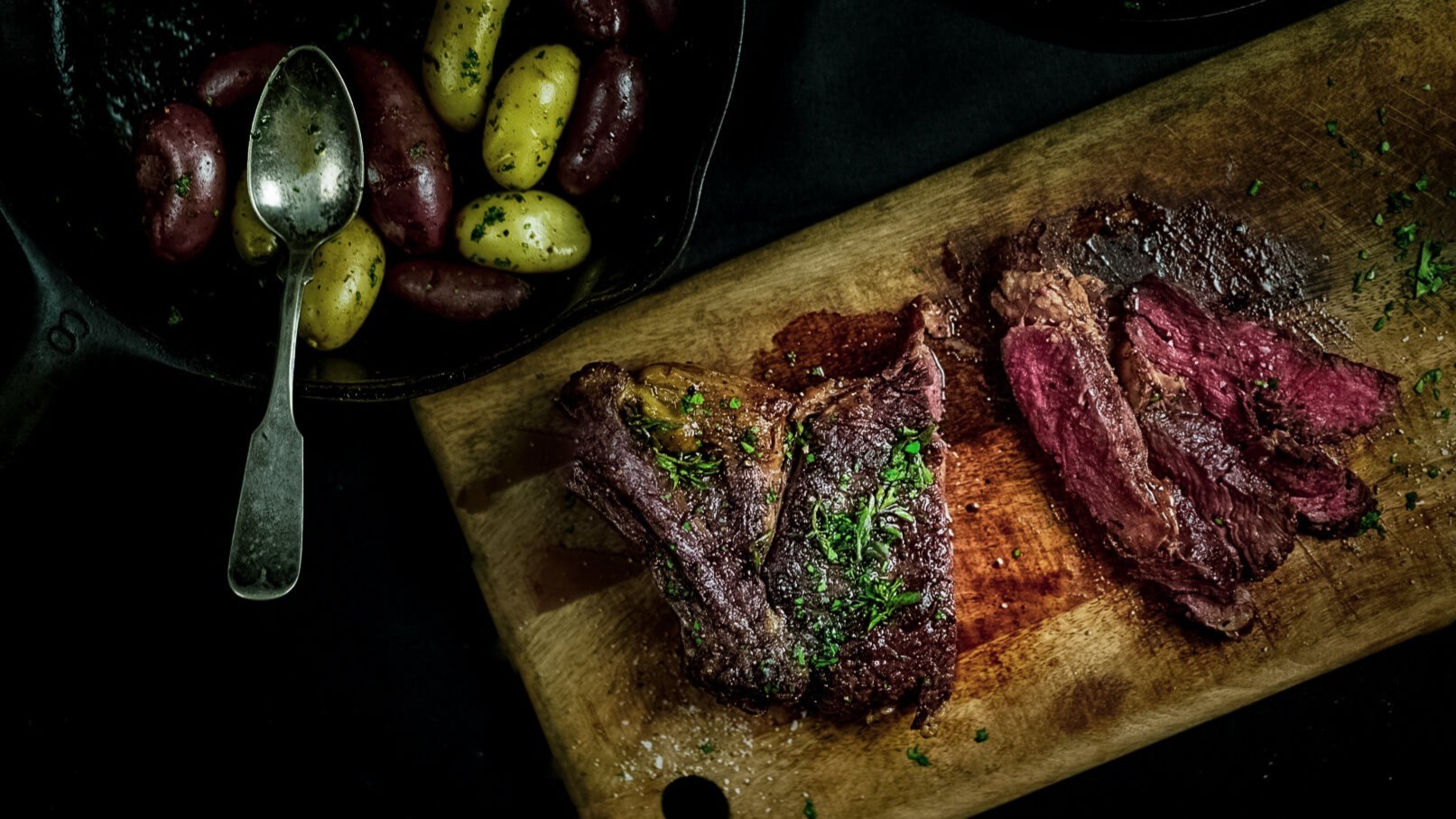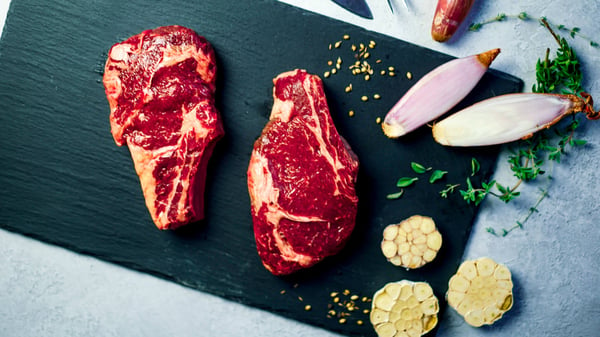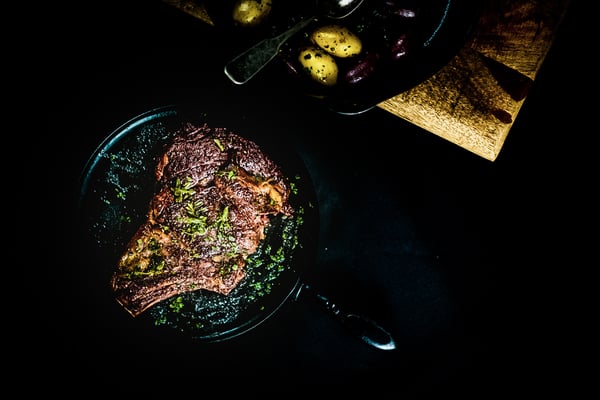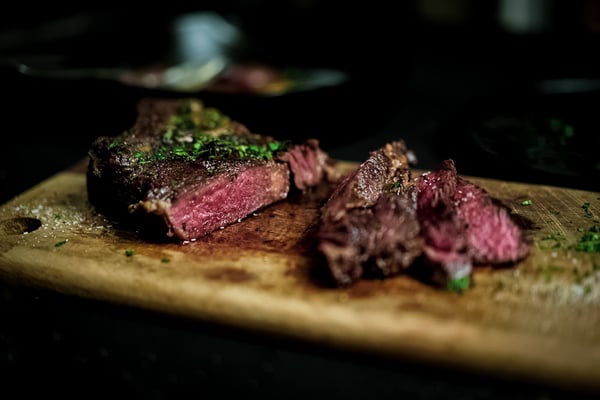If you were to take a fresh ribeye out of our on-farm abattoir’s Cutting Room and cook it without aging it properly, it would most likely result in a tough steak. Particularly for grassfed steaks, we recommend aging the meat.
Aging is controlled decomposition, the muscle fibers breaking down thanks to bacteria. The exact amount of aging can be a personal preference, just like how people have different preferences with aged cheeses. Aging meat not only creates a more complex flavor, but it will also tenderize the meat and make it harder to overcook on the grill or stovetop.
For our steaks, we recommend using a "wet age" process (some people choose to "dry age" steaks, but you lose a lot of moisture content that way).
How to wet age your grassfed steak
- Your steak arrives in a vacuum-sealed bag. To age, store as-is in your refrigerator, in the bag (the original vacuum packaging).
- We recommend aging your steak for up to 21 days to get a good amount of tenderness.
- The longer the steak ages, the more the muscle fibers break down and tenderize it naturally.
- Once your steak is aged to your liking, it's ready to cook!
Note: if aging isn't your thing, that's ok! We would still recommend using an alternative method to start to break down the muscle fibers before cooking. There are other alternative options to tenderize your grassfed beef, such as physically tenderizing the meat with a jaccard tool or using a dry or wet brine.
How to cook your grassfed steak in a cast iron or on the grill
- Take your steak out of the package and pat dry.
- If you have aged your steak for a long time, you can rinse off the steak first to remove some of the oxidized blood odor if desired.
- If possible, let your steak sit for 30 minutes to 1 hour to get rid of the refrigerator chill and adjust to room temperature.
- Pro tip: if you cook a steak straight from the fridge, your finished product will be more likely to have an inside cold and underdone, and an outside charred and overdone.
- Season your steak generously.
- You can choose a classic salt and pepper mix, or try a rub or spice mix. Grassfed beef goes well with warm, smoky flavors, like paprika, ancho chile, cayenne, and cumin.
- Heat cast iron pan on medium-high and add enough oil to lightly coat.
- Test that your pan is hot enough before your steak by flicking a drop of water onto the pan and listening for a sizzle. This will help you get good caramelization.
- Add your steak and press down to get a good sear. A crust of caramelization on the outside of your steak is where you get the best flavor!
- After you get a good sear on one side of the steak, flip and sear the other side (2 minutes each side).
- Grassfed steaks are leaner, and as such, they usually don't take as long to cook as a traditional steak. For perfect tenderness, we recommend cooking your steak to a rare or medium rare.
- The exact cooking time for a rare or medium rare may vary depending on the thickness of your steak, but use a thermometer to test for doneness and watch the temperature carefully. Be attentive, because in just a minute, the steak can go from perfectly cooked to overdone!
- You will want to pull the steak from the pan when it is 10 degrees LOWER than your desired temperature, because it will continue to cook after you remove it from the heat.
Steak Cooking Chart
Rare - 120°F to 125°F
Medium Rare - 130°F to 135°F
Medium - 140°F to 145°F
Medium Well - 150°F to 155°F
Well Done - 160°F
- Once you have seared both sides and reached your desired internal temperature, remove the steak from the pan and let rest for 5-10 minutes (a general rule of thumb is 5 minutes per inch of thickness)
- This is a critical step! When you cook a steak on high heat, all the juices start to rush to the outside of the meat. When you let the steak rest, the juices have time to redistribute back toward the middle, and the steak continues to cook a little bit from the residual heat. This rest period is what makes every bite flavorful and moist.
- Slice the steak against the grain.
- All cuts of meat have long muscle fibers that run throughout them. If you make cuts parallel to the muscle fibers, this will be tougher to chew. Instead, cut crosswise against the muscle fibers, so the muscle fibers are shorter and more tender.
- Serve with any juices, and enjoy!
Sound like a little too much to start with? Check out our guide to The Reverse Sear cooking method here!
Or need a video? Check out one of our steak cooking videos on our YouTube Channel!





